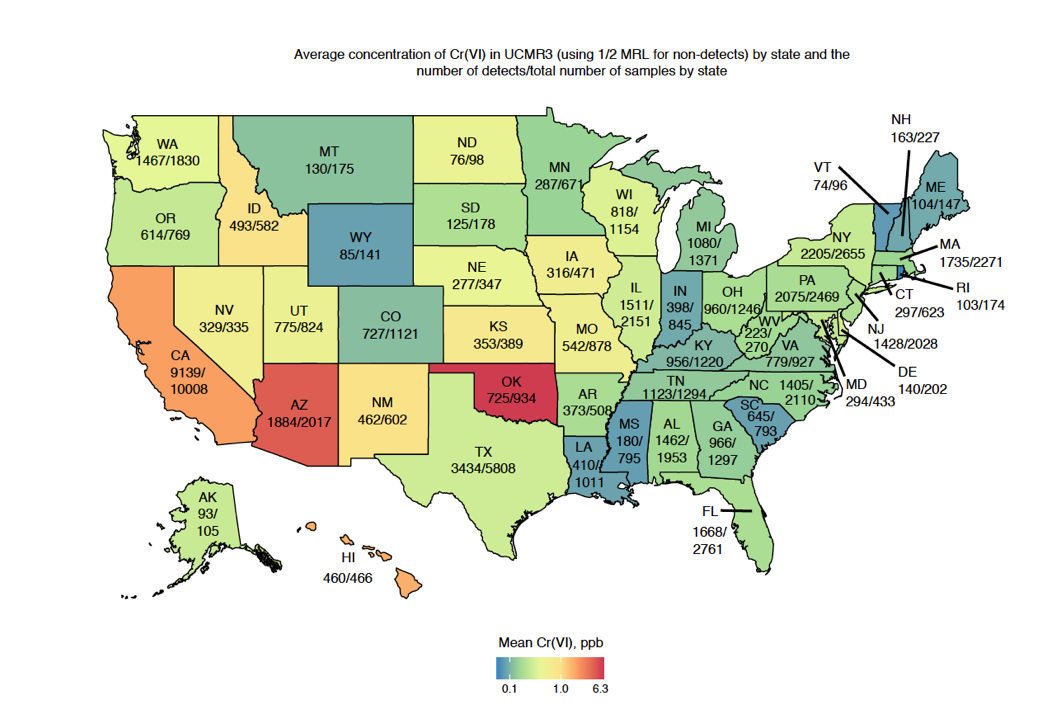

“We had known for some time that chromium-6 was present in the soil, but recently we also learned that buildings and waterways are contaminated with it,” says Jan De Vos, environmental engineer and soil expert. Partly for this reason, the Belgian newspaper De Morgen has placed chromium-6 in the top 10 substances that threaten our soil and waterways – the sources for our drinking water. In fact, you can find it in all kinds of products, such as cosmetics, preserved wood, cement, leather and tattoo ink. Despite a ban on chromium-6, the metal has not completely disappeared from our society. How credible is that?” says Jacob de Boer, professor of environmental chemistry and toxicology at VU University Amsterdam. 2017 annual report: exactly the same number. “According to the 2016 annual report, the emissions amounted to 7.79929052 kilograms per year. The company produces questionable amounts every year.

In areas such as in IJmuiden, the smoke plumes from steel giant Tata Steel contain chromium-6. In 2019, the National Institute for Public Health and the Environment (RIVM) issued a reassuring statement: “There is no health concern due to exposure to chromium-6 through food or drinking water.” According to the RIVM’s report, concentrations of chromium-6 in drinking water in the Netherlands are “very low”, but in urban areas the concentration in the air are higher. Measurements taken between 20 showed that chromium-content sporadically exceeded the standard. This sample is representative of the amount of metal that a consumer ingests weekly from drinking water. When the limit in drinking water is exceeded, a drinking water company is obliged to stop supplying consumers.ĭrinking water companies must also sample and test chromium at the tap via a so-called Random Daytime (RDT) test. In drinking water (and drinking water sources) chromium is an audit parameter, which means that its concentrations are measured. As yet, there is no set standard for chromium-6. The maximum amount of total chromium in drinking water and natural mineral water is 50 micrograms per litre. The statutory quality requirements for drinking water are dictated by the Drinking Water Decree, which is based on the European Drinking Water Directive and advice from the World Health Organisation (WHO). Various chromium compounds can be present in our drinking water. And that is important, because the extent to which chromium-6 dissolves in our surface water affects drinking water. The water solubility of each chromium-6 compound differs, up to 1667 grams per litre. During renovation or maintenance works, chromium-6 can end up in the air, soil and possibly in our surface water: our drinking water source. Nevertheless, the metal is still regularly released into the environment because this type of paint is still present on many old buildings. The chrome-containing paint used on the trains in Tilburg has now been banned. It can also cause long-term health problems, such as gene mutation, stomach problems, respiratory issues, kidney and liver damage, weakened immunity, and cancer. Inhaling chromium-6 can cause nasal irritation and nose bleeds. Health issuesĬhromium-6 is formed and released when materials containing chromium-0 or chromium-3 are processed with heat, for example during the sanding work in Tilburg, or during grinding, welding or combustion work. Chrome-0 is understood not to be harmful in its original form, and is used in chrome plating (of faucets, for example). Only if you are allergic can it lead to allergic reactions. In fact, not getting enough chromium-3 can even increase the risk of diabetes. Chromium-3 is a mineral that occurs naturally on earth and is present in certain foods. The most common forms of chromium are chromium-0, chromium-3 and chromium-6. According to the court, NedTrain should have known that the participants would be exposed to very dangerous substances.Ĭhromium is a metal that is found in the air and in the soil. The case went to court, and NedTrain was found liable for the damage suffered by the victims. As a result, some of the 33 participants suffered demonstrable health damage. During the sanding work, chromium-6 was released. Between 20, participants of a reintegration project in Tilburg carried out maintenance work for the Dutch Railways (NedTrain). The fact that chromium-6 is harmful to health first became apparent in Brabant – The Netherlands. “We have piping and chromium-6 may be present there,” says René Nuij, operational safety expert at Waternet. It is known as the ‘new asbestos’ and is increasingly in the news: chromium-6, a toxic metal that is dangerous to health, is present in our drinking water.


 0 kommentar(er)
0 kommentar(er)
